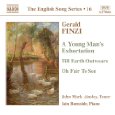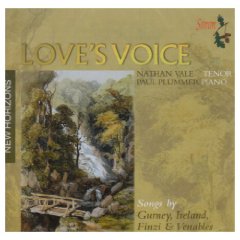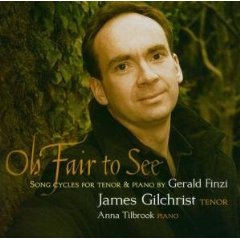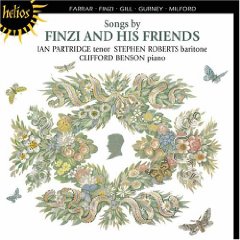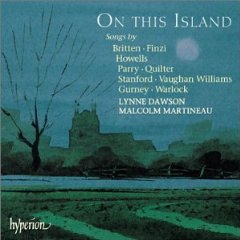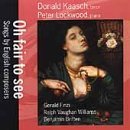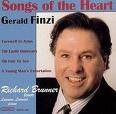Oh Fair To See
Song Analysis
Poet: Christina Rossetti (1830-1894)
Date of poem: (undated)
Publication date: In the collection: Sing-Song (1872) (Banfield, 43)
Publisher: Year Book Press (Banfield, 44)
Collection: Sing-Song: A Nursery Rhyme Book (1872)
Poem
| 1 | Oh, fair to see | a |
| 2 | Blossom-laden cherry tree, | a |
| 3 | Arrayed in sunny white; | b |
| 4 | An April day’s delight, | b |
| 5 | Oh, fair to see! | a |
| 6 | Oh, fair to see | a |
| 7 | Fruit-laden cherry tree, | a |
| 8 | With balls of shining red | b |
| 9 | Decking a leafy head, | b |
| 10 | Oh, fair to see! | a |
Content/Meaning of the Poem:
The poem is a simple pastoral lyric describing a cherry tree at Spring time and then in the second stanza late Summer just before harvest. Christina Rossetti's use of "arrayed" and "head" give one pause in contemplating a possible deeper meaning. "Arrayed" is typically associated with a person and perhaps that is the direction Rossetti would want an adult to ponder. Thinking along these lines perhaps the first stanza represents a young adolescent "arrayed" in her dress for Easter and the second stanza represents the young adult full of passion and confidence. Perhaps, Rossetti just wanted one to enjoy two beautiful scenes of nature and relish the harvest to come both translations seem plausible.
Speaker: Possibly the author.
Setting: A pastoral scene, perhaps in a garden or even a nice estate with a beautiful cherry tree.
Purpose: Commune with nature and enjoy the tranquility it evokes.
Idea or theme: Nature, peace
Style: Written in a lyrical style.
Synthesis: Christina Rossetti was not truly appreciated for her art even after the success of Goblin Market in 1862. She was mostly obscured by her brother Dante and perhaps because it was a male dominated art form as well. One can see in these simple lyrics of Oh Fair to See a descriptive language that both children and adults would have enjoyed. But, when one considers the life of Christina Rossetti one might also wonder if this poem is autobiographical, if you will. We know that Christina lived a life that was not full of joy. She was not fortunate in love and perhaps by the time this poem was written she was in her early forties. She might have seen herself as the young girl blossoming and then ripe for the picking. On the other hand when one interprets the poem it would be best to not contemplate the darker side of her life and lack of joy and instead focus on the happiness of the lyric while regret may be in the back of ones mind.
✦✼✦✼✦✼✦✼✦✼✦✼✦✼✦✼✦✼✦✼✦✼✦✼✦✼✦✼✦✼✦✼✦✼✦
Musical Analysis
Composition date: 1929 (McVeagh, 43)
Publication date: First published 1965 - © Copyright 1966 by Boosey and Co. Ltd.
Publisher: Boosey & Hawkes - distributed by Hal Leonard Corporation
Tonality: The song begins in C minor and ends in C major in between Finzi modulates to F minor. The F minor modulation begins in measure twenty-one where Finzi writes an E-natural in the bass clef of the accompaniment. Three beats later, in measure twenty-two, he includes a B-flat, thus creating a dominant seventh chord. A full cadence follows as the chord progression moves to a F minor chord in root position on the last beat of measure twenty-two (see example below).
Modulation to F minor in measure 21-2. (Finzi, 69)
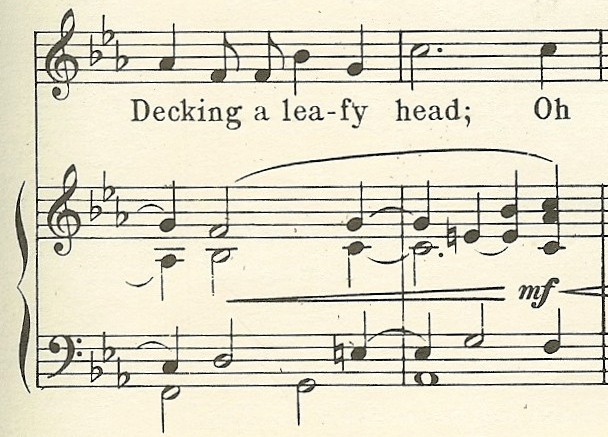
Beginning in measure twenty-four there is an indication of C major when Finzi uses a Neapolitan chord on the lowered second scale degree D-flat. The G, in the piano accompaniment and the vocal line, can be justified as a suspension. The Neapolitan resolves to a C major chord at the beginning of measure twenty-five. Finzi uses a Plagal cadence to end the song but the F major (IV) chord is in second inversion and it has a D passing tone which weakens the final cadence (see example below).
Modulation to C major in measures 24-8. (Finzi, 69)
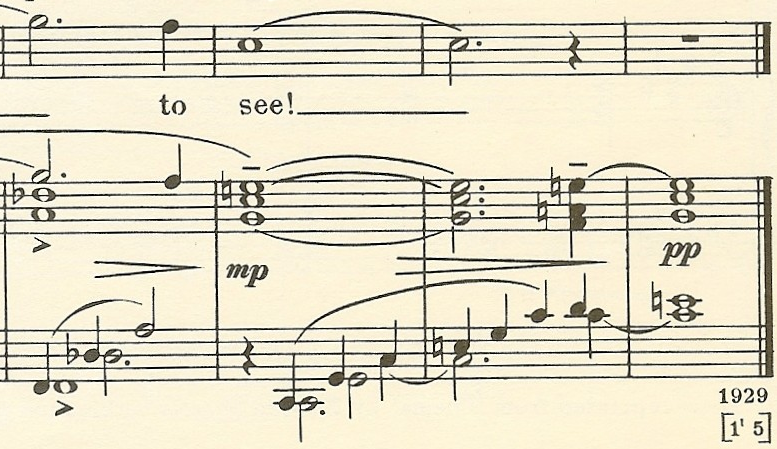
Transposition: The song is available a minor third lower than the original key. The transposed version may be found in the Medium/Low Voice edition by Boosey & Hawkes entitled: Gerald Finzi Collected Songs 54 Songs Including 8 Cycles or Sets.
Duration: Approximately one minute and thirty-six seconds.
Meter: The song remains in 4/4 meter throughout.
Tempo: The opening tempo indicated is Lento with the half note equalling forty-eight. The first deviation occurs in measure eleven with a poco ritenuto indicated. This coincides with the first repeat of the opening melodic motif with the text "Oh fair to see!" A tempo is indicated in the middle of measure thirteen. The last deviation occurs in measure twenty-four with a poco ritenuto al fine indicated which coincides with the elongated reversed version of the head motif on the text "fair to see!"
Form: The form is modified strophic and can be described as A, A¹. The subtle differences between the two stanzas are primarily found in the accompaniment where the texture is a little thicker at the beginning of the second stanza when the vocal line re-enters. Another subtle difference can be found in the interlude between the first and second stanzas. The interlude uses the same slow arpegiation that was found in the prelude but in this instance it is built on E-flat major instead of C minor. Finzi re-establishes C minor at the beginning of the second stanza in measure fourteen when he writes a G minor seventh chord in second inversion. Lacking a true dominant chord before returning to C minor gives the song a modal feeling. The vocal line of the second stanza begins exactly as the first but beginning in measure nineteen some harmonic changes occur and the vocal line is modified to accommodate a modulation to F minor in measure twenty-one (see example below).
Vocal line modulates up a perfect fourth in measures 21-2. (Finzi, 69)

The last modulation to C major begins in measure twenty-four with a Neapolitan chord and Finzi remains in C major for the conclusion of the song (see example below).
Modulation to C major in measure 24-7. (Finzi, 69)

The vocal line is truly the unifying feature of the song and particularly the head motif with four occurrences (see examples below of the motif in the Rhythm category).
Rhythm: There are no unusual rhythms found in the song but Finzi does employ a rhythmic motif to frame both stanzas (see examples below). In its pure form the motif occurs in measures two through four, ten through twelve, and fourteen through sixteen. The last occurrence is slightly modified with the first dotted half tied to a whole note and the whole note that concludes the motif is tied to a dotted half (see examples below).
Rhythmic motif's first occurrence in measures 2-4. (Finzi, 68)

Rhythmic motif's second occurrence in measures 10-3. (Finzi, 68)

Rhythmic motif's third occurrence in measures 14-6. (Finzi, 69)

Elongated rhythmic motif in measures 22-6. (Finzi, 69)

A rhythmic duration analysis was performed and for the results please refer to: Rhythm Analysis. Information contained within the analysis includes: the number of occurrences a specific rhythmic duration was used; the phrase in which it occurred; the total number of occurrences in the entire song. The most common rhythmic duration used in the song is that of the quarter note with twenty-six occurrences in total. It is evenly used in both stanzas. The second most common duration is the eighth note with eight occurrences in total. The dotted half is also fairly popular with six occurrences in total.
Melody: The vocal line features a slow stately melody that utilizes a melodic motif that can be seen above in the rhythm category as examples of a rhythmic motif. The melodic motif frames both the beginning and ending of each stanza. Beyond the melodic/rhythmic motif the melodic material is very simple.
An interval analysis was performed for the purpose of discovering the number of occurrences specific intervals were used and also to see the similarities if there were any between stanzas. Only intervals larger than a major second were accounted for in the interval analysis. For a complete description of the results of the interval analysis please see the table at the bottom of the page or click on the link: Interval Analysis.
The vocal line is in a typical Finzi style consisting of step-wise motion and small leaps, larger leaps are reserved for highlighting the text. The largest leap within the vocal line is the perfect fifth; there are three ascending occurrences and four descending. The last occurrence in measures twenty-two and twenty-three is also the most dramatic as it features the climax of the song on the text "Oh fair" (see elongated rhythmic motif above).
Texture: The song utilizes a homophonic texture. The vocal line is played almost throughout the entire song in the right hand of the accompaniment making the song one of Finzi's most accessible for younger singers.
Vocal Range: The vocal range spans the interval of a major tenth. The lowest pitch is the E flat below middle C and the highest pitch is the G above middle C.
Tessitura: The tessitura of the song is one octave and lies between the E flat below middle C and the E flat above middle C. For a complete pitch count for each stanza please refer to: Pitch Analysis.
Dynamic Range: The song begins and ends at the pianissimo dynamic in the piano accompaniment which is also the softest indication. The climax of the song occurs in measure twenty-three, with a forte indicated on the text, "fair." There are several indications for crescendo and decrescendo throughout but there are no dynamic markings for the vocal line.
Accompaniment: The accompaniment is possibly one of the easiest to play of all of Finzi's songs. This is due primarily to a slow tempo and long rhythmic values. Maintaining the legato line will be the most challenging aspect of the accompaniment.
Published comments about the music: Diana McVeagh a well respected authority on Finzi's music makes the following comments in her Finzi biography: "'Oh fair to see' (1929), to words by Christina Rossetti, contains what was to become a melodic finger print (Ex. 3.3). The song is in C minor. The singer's third phrase rises through pairs of thirds to the fifth of the scale. In this case, the fingerprint also shows Finzi's way of illuminating a special word harmonically. It begins with a second inversion of an E flat triad on a strong beat, then the bass descends by step, the 'tenor' is suspended over the bar line, and resolves by a momentary flash of C major for 'de-light', like an unexpected shaft of sunlight."
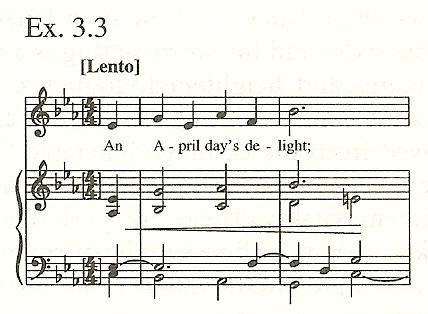
(McVeagh, 43)
Stephen Banfield writes in his Finzi biography the following with regards to Oh fair to see: "It is quite possible that 'Oh fair to see' was originally a unison song and Finzi recast it for solo voice during his 1940 bout of revision. Despite a 1929 dating by Howard Ferguson, the pencil '12' at the end of the manuscript could indicate its nominal inclusion (plus that of 'Before the paling of the stars'?) in his Op. 1 as this interim stage before eventually being fitted into a miscellaneous solo set. Finzi's description of it to Toty de Navarro suggests that he thought of it - as 'negligible' - in the same breath as the 1920-21 settings. In fact with the benefit of his stylistic gains from the 1930s it works rather well, cultivating candour and warmth on the simplest possible premises. One can imagine what the revision brought: the instrumental echoes of vocal phrases; a basic feeling for keyboard sonority, particularly of open-position triads and parallel sixths (see the accompaniment at 'Arrayed in sunny white'); the framing of dissonance so that it has space to sound (as at the final refrain); perhaps the vocal climax; and secondary-dominant inflection (the E [natural] at the word 'delight') and momentary harmonic colouring (at 'shining' and towards the final cadence). The artless melodic line conceals its logical perfection, itself testimony to cool unified construction rather than heated piecemeal inspiration, the latter not always an overall gain in Finzi's more rhetorical solo songs." (Banfield,46-7)
Pedagogical Considerations for Voice Students and Instructors: A fairly simple song that should be accessible for most tenors and could make a good song to introduce Gerald Finzi to a young singer. The most difficult phrase is also the last phrase in the song and involves a leap to a [g] on the text "fair." If the [g] presents a problem, monitor the breath flow on the consonant [f] to make sure the breath flow is not overly impeded. Another potential difficulty may occur with the final consonant [r]. Some American students may allow the [r] to creep in early which may cause some tongue and jaw tension to occur. A possible fix to this scenario is to not sing the [r] and move on to the [t] of the text "to," making sure to lightly articulate the [t] as well.
✦✼✦✼✦✼✦✼✦✼✦✼✦✼✦✼✦✼✦✼✦✼✦✼✦✼✦✼✦✼✦✼✦✼✦
| Pitch Analysis | ||||
|---|---|---|---|---|
| pitch | stanza 1 |
stanza 2 |
total | |
highest |
G |
1 |
1 |
|
F |
1 |
1 |
||
E flat |
1 |
1 |
2 |
|
D |
1 |
1 |
2 |
|
middle C |
3 |
5 |
8 |
|
B flat |
5 |
4 |
9 |
|
A flat |
3 |
3 |
6 |
|
G |
4 |
4 |
8 |
|
F |
3 |
4 |
7 |
|
lowest |
E flat |
6 |
2 |
8 |
✦✼✦✼✦✼✦✼✦✼✦✼✦✼✦✼✦✼✦✼✦✼✦✼✦✼✦✼✦✼✦✼✦✼✦
Audio Recordings
The English Song Series - 16 |
|
|
|
Love's Voice |
|
|
|
Song Cycles for Tenor & Piano by Gerald Finzi |
|
|
|
Song by Finzi and His Friends |
|
|
|
On This Island |
|
|
|
Oh Fair to See: Songs by English composers |
|
|
|
Songs of the Heart: Song Cycles of Gerald Finzi |
|
|
|

